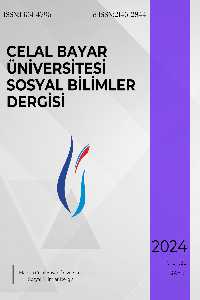Öz
In order to create a positive sense of self, a person has to establish a balance between conscious and unconscious. The unconscious is divided into two parts: collective and individual unconscious. The collective unconscious is the unchanging motifs that we carry in our soul since ancient times. The elements of the collective unconscious, which Jung calls "the first example, archetype", can be traced in literary products such as epics, fairy tales, myths and folk tales that have been told since ancient times. Joseph Campbell, based on Jung's archetypes, identified common patterns that repeat themselves in narratives. The hero goes through certain and stereotyped stages and difficulties. The hero who can overcome the difficulties completes his spiritual transformation and returns to where he started. Campbell defines the repeating patterns in the stories about the hero's journeys as "hero archetype, monomyth theory". According to this theory, the hero goes through three basic stages: "departure, maturation and return".
The journey of heroes in Süheyl ü Nevbahâr masnavi, mother, supernatural power, self, false hero, old wise archetypes analyzed according to Campbell's monomyth theory; the concepts of threshold guard, persona, shadow, anima, animus were determined and explained in the study.
Anahtar Kelimeler
Kaynakça
- Akça, H. (2016). Kemal Tahir’in romanlarında yolculuk arketipi. Yayımlanmamış Doktora Tezi. Kayseri: Erciyes Üniversitesi.
- Armstrong, K. (2005). Mitlerin Kısa Tarihi. (Çev: D. Şendil). İstanbul: Merkez Kitapçılık.
- Bal Geldi, N. (2016). Kerem ile Aslı hikâyesinin sembolik çözümlemesi. Yayımlanmamış Yüksek Lisans Tezi. Elazığ: Fırat Üniversitesi
Öz
İnsan olumlu benlik algısını oluşturabilmek için bilinç ve bilinç dışı ile denge kurmak zorundadır. Bilinç dışı kolektif ve bireysel bilinç dışı olarak iki kısma ayrılır. Kolektif bilinç dışı eski çağlardan beri ruhumuzda taşıdığımız değişmeyen motiflerdir. Jung’un “ilk örnek, arketip” adını verdiği kolektif bilinç dışı ögeleri, eski zamanlardan beri anlatılan destan, masal, mit, halk hikâyesi gibi edebî ürünlerde takip edilebilir. Joseph Campbell, Jung’un arketiplerinden yola çıkarak anlatılarda ortak şekilde kendini tekrar eden kalıplar tespit etmiştir. Kahraman belirli ve kalıplaşmış aşamalardan, zorluklardan geçer. Zorlukları geçebilen kahraman ruhsal dönüşümünü tamamlayıp başladığı yere döner. Campbell kahramanın yolculuklarını anlatan hikâyelerdeki tekrar eden kalıpları “kahraman arketipi ya da monomit kuramı” olarak tanımlar. Kahraman bu kurama göre “yola çıkış, erginlenme, dönüş” olmak üzere üç temel aşamadan geçmektedir.
Süheyl ü Nevbahâr mesnevisinde kahramanların yolculuğu, Campbell’in monomit kuramına göre incelenmiş anne, doğaüstü güç, benlik, sahte kahraman, yaşlı bilge arketipleri; eşik muhafızı, persona, gölge, anima, animus kavramları çalışmada tespit edilerek açıklanmıştır.
Anahtar Kelimeler
Kaynakça
- Akça, H. (2016). Kemal Tahir’in romanlarında yolculuk arketipi. Yayımlanmamış Doktora Tezi. Kayseri: Erciyes Üniversitesi.
- Armstrong, K. (2005). Mitlerin Kısa Tarihi. (Çev: D. Şendil). İstanbul: Merkez Kitapçılık.
- Bal Geldi, N. (2016). Kerem ile Aslı hikâyesinin sembolik çözümlemesi. Yayımlanmamış Yüksek Lisans Tezi. Elazığ: Fırat Üniversitesi
Ayrıntılar
| Birincil Dil | Türkçe |
|---|---|
| Konular | Edebiyat Sosyolojisi |
| Bölüm | Makaleler |
| Yazarlar | |
| Yayımlanma Tarihi | 27 Mart 2024 |
| Yayımlandığı Sayı | Yıl 2024 Cilt: 22 Sayı: 1 |

